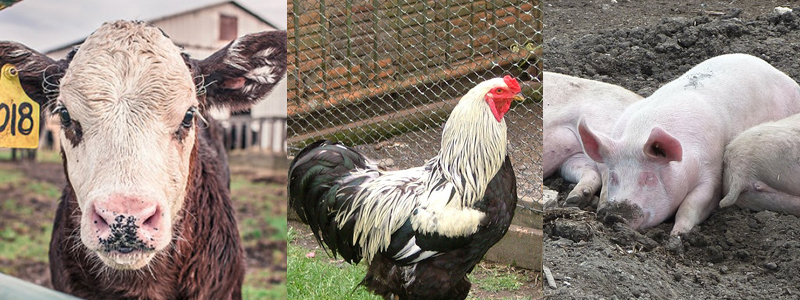Could rabies be eradicated by 2030, much as polio was for humans in the 1950s?
“Globally, the big push is for elimination of rabies worldwide by 2030, an ambitious but possible achievement,” said Susan Moore, Assistant Professor, Rabies Laboratory Director, Kansas State Veterinary Diagnostic Laboratory (KSVDL)/Kansas State University, Manhattan, Kan.
The World Health Organization (WHO), World Organisation for Animal Health (OIE), Food and Agriculture Organization of the United Nations (FAO), and the Global Alliance for Rabies Control (GARC) are leading the rabies elimination efforts. The campaign was announced in 2015 in Geneva, Switzerland, Susan Moore said, who attended the meeting.
“This joint effort is important because it marks the first time these agencies have come together to tackle rabies elimination in a One Health approach,” she said. “It is particularly important to us in Kansas because Dr. Deborah Briggs, Adjunct Professor and former Rabies Laboratory Director at KSU, was instrumental in starting GARC and has worked closely with the WHO advocating for rabies research, awareness, and education.”
National Developments, Local Research
In the United States, the newest development is the change in March 2016 to the Compendium for Animal Rabies Control and Prevention. Many states follow the Compendium in writing the rabies regulations, Susan Moore noted. The Compendium allows pets out of date for their routine rabies vaccination to be treated as a currently vaccinated pet when exposed to rabies.
“For the pet owner, this means not having to face the decision of euthanasia or costly quarantine for their pet,” she said.
Pets with out-of-date vaccinations that are exposed to the rabies virus are required to either stay in observed quarantine for six months — which can cost owners $5,000-$7,000 — or to be euthanized.
The change was partly due to published research by a group at KSU, Susan Moore explained. In 2015, the findings appeared in the Journal of the American Veterinary Medical Association study, “Comparison of anamnestic responses to rabies vaccination in dogs and cats with current and out-of-date vaccination status.” It was the first study to present scientific data for animals with out-of-date rabies vaccinations.
“Our hope is that now dogs and cats with an out-of-date vaccination status that are exposed to rabies will be allowed to be handled the same as dogs and cats with up-to-date vaccinations,” said Michael Moore, a project manager in the Kanas State University Veterinary Diagnostic Laboratory. “They will be given a booster and a 45-day observation at home.”
Michael Moore conducted the study with Rolan Davis, reference diagnostician of the Veterinary Diagnostic Lab; Derek Mosier, professor of diagnostic medicine and pathobiology; Christopher Vahl, assistant professor of statistics; and colleagues at the Statistical Intelligence Group LLC and Centers for Disease Control and Prevention.
The study looked at 74 dogs and 33 cats with current and out-of-date rabies vaccinations. Most of the animals were one to two years out-of-date on their vaccines. A smaller segment was three to four years out-of-date.
Researchers studied the anamnestic antibody responses of the animals. They found that when an animal with an out-of-date vaccination was given a booster vaccination, the neutralizing antibodies in the animal’s blood rose, protecting the animal against exposure to the rabies virus.
Each year the U.S. has around 6,000 documented cases of rabies, mostly in raccoons, skunks, bats and foxes. The disease is usually fatal for animals.
This research also lines up with a growing concern regarding the over-vaccination of pets and a push by some veterinarians and pet owners to recognize rabies titer results as proof of vaccination to eliminate routine vaccination. For nearly two years, KSU’s KSVDL has offered a core vaccine titer panel to provide a means to check titers and use them to evaluate reasonable vaccination schedules.
Regarding treatment, Susan Moore said growing evidence exists that though rabies is still considered nearly 100 percent fatal, some survivors have been identified, which has brought more information to researchers looking for possible treatments.
“The information so far is pretty sparse but interesting,” she said.










